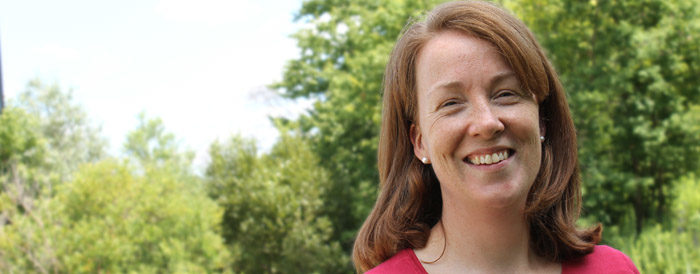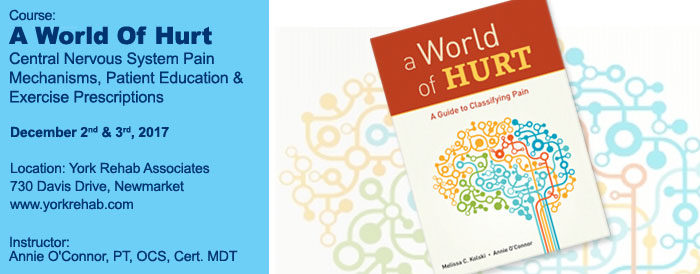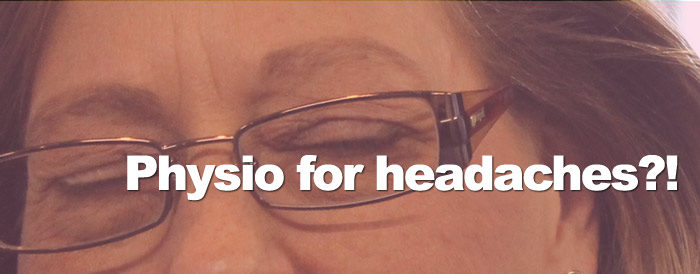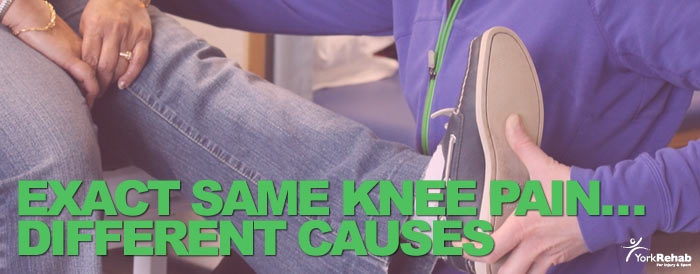McKenzie Therapy
Our Awesome Staff
We’ve been in business for more than 20 years offering chiropody, massage and physiotherapy treatment to patients within the town of Newmarket and surrounding areas. We pride ourselves on our approach to treatment that is 100% patient focused. Our policy has always been that for every Physio appointment, the patient is seen exclusively by a Physiotherapist for the entire visit. This ensures the patient’s comfort, movement and progress are exclusively observed by the therapist. Some clinics use physio assistants during patient visits…a strategy that sometimes frees up the Physiotherapist to see another patient or two at the same time – we believe treatment is more effective when our therapist stays with one patient for their entire visit. This allows the therapist to directly monitor patient’s progress by directly observing how the patient feels as they receive treatment and are directly accessible when invariably the patient has a question. Our goal in caring for our patients is that we treat them effectively and fast…we aim to minimize your time with us. This patient-centric approach only works if we have therapists who truly care about the patient.
We are very fortunate to have such caring staff. So much so that their care often extends beyond our four walls. Here’s an awesome example of that. Meet Fiona, one of our physios who has been with us for several years. She’s a licensed physiotherapist who also has a diploma in Mechanical Diagnosis and Therapy – a title possessed by less than 30 therapists in Canada. Fiona will be traveling to Peru (August 2018) with a team MDT trained therapists to participate in a humanitarian effort that will assemble a pop-up clinic to offer treatment to locals for several days. This program is aimed at providing quality MDT care to underserved areas around the world.
We asked Fiona a few questions about her trip.
——————————————-
——————————————-
Why did you get involved with this initiative?
I am passionate about MDT and travel – this is a great way to merge both. Being able to share my knowledge of MDT as an evidence-based approach for the benefit of underprivileged individuals is quite rewarding. At the heart of the method is how we educate patients to treat themselves to continue to self-manage their symptoms should they recur –MDT is not well known to Peruvians… the same holds true even in right here in Toronto, Canada!
Have you done any other humanitarian efforts before?
It wasn’t quite a humanitarian effort per-se, but I did travel to Iqaluit, NU in the Canadian Arctic. I arranged a leave of absence, to allow me the opportunity to work for the Government of Nunavut for six-weeks in April/May of 2017. There I was able to use MDT to assist with offering evidence-based care, while also while also significantly reducing their outpatient orthopaedic wait list.
So, this will be a lengthy trip to allow you to treat patients over an extended period of time, how are you affording it?
If you count 18+ hours of travel with three layovers, then yes it’ll be lengthy. But in reality, the trip will actually be relatively short. We are aiming that each patient will receive an assessment and follow-up visit during our time in Peru. What allows us to do this is the potential for rapid and lasting change with the use of McKenzie MDT.
- We are away for 11 days, but 2 of those are travel days (3-connections, 18+hr travel)
- We are offering a 3-hour workshop for local physicians and physiotherapists
- We are offering a 4-day clinic for the under-privileged
- Then, for our own fun/reward, we’ll visit Machu Picchu
Are you going with a big team?
This year will mark the largest group of clinicians gathered together for Mechanical Care Everywhere. A total of 11 of us from four different countries will participate. While those numbers appears relatively small, eight of those clinicians participating are Diploma Level. That’s amazing! But let me put it into perspective: To date there are 450 Diploma Level clinicians worldwide…eight of them will be represented on this trip! Within Canada there are 30 Diploma Level clinicians…York Rehab has 2 of them!
Why choose Peru as the destination?
Jason Ward (PT), the founder of Mechanical Care Everywhere has visited this area before and has connections there to assist with an effort of this magnitude.
It’s probably going to be an expensive trip – who is sponsoring you guys?
None of the participants received any funding for this trip – we have all paid out of our own pocket for air travel, accommodation, food and the costs associated with the 4-day clinic. Friends, family members, colleagues and various branches of the McKenzie Institute International have provided donations to Mechanical Care Everywhere to assist with offsetting some costs like the following:
- $25.00 (1 patient exam & home program)
- $50.00 (1/2 day of translators)
- $100.00 (1/2 day of clinic operation)
- $250.00 (1 full day of clinic operation)
If you want to learn more about the project you can check out the MCE website: www.mechanicalcareforum.com/mce
So this will be a series of trips so you can do follow-up visits right?
If we return to Peru again it will be a separate initiative. For this trip, our goal is to assess each patient and complete a follow-up visit during our brief time in Peru. At the heart of the method is how we educate patients to treat themselves to continue to self-manage long after we have returned home.
How is it that MDT can offer such fast results?
Mechanical Diagnosis and Treatment (MDT) is a safe, structured and evidence-based system used to assess and treat patients. The system can be applied to the spine and/or extremities. As MDT therapists, our greatest skill lies in our assessment, where we use the information collected from how a patient feels (symptoms) and how a patient moves (mechanics) to classify them into a particular group. From there, we can then match our treatment approach with the particular classification. Patients receive a program designed specifically for them, emphasizing active involvement, education, self-management and prevention of recurrence. With continual assessment and re-assessment of the patient (often less than 6 sessions), results are achieved fast, decreasing the financial burden on patients.
Once you leave Peru, how will you know if the trip is a success?
Following our 3-hour educational workshop with the local Peruvian physicians and physiotherapists, we will offer the opportunity for those interested to observe with us during our clinic days as an added learning opportunity. Thereafter, we will also network with these clinicians to encourage their learning remotely through the many forms of social media. This way, education will continue long after we have returned home.
I’d also like to share a story of MCE Founder Jason Ward – last year he had a woman waiting in line to see him specifically. She was offered the opportunity to be assessed by one of the other therapists, but declined; content to wait for Jason himself. Jason remembered her as a patient from the previous year. This woman waited hours in line to thank Jason for his assistance the year prior. She has been continuing with her exercises since Jason’s last visit and has remained pain-free as a result. Now THAT is proof in the pudding!
——————————————-
——————————————-
Thanks for taking the time to share a bit about this initiative Fiona. Have a great trip!
We are so proud of Fiona.
Course: World of Hurt (Dec 2 & 3, 2017)
Course:
A World Of Hurt: Central Nervous System Pain Mechanisms, Patient Education & Exercise Prescriptions. Course outline is available here.
– LIVE patient demos will be included
Who should attend:
This course will benefit any healthcare provider working with patients dominated by Central Nervous System (CNS) Pain Mechanisms. Strategies to sub-group patients within this classification will be provided to allow for targeted treatment
Instructor:
Annie O’Connor, PT, OCS, Cert. MDT
Rehabilitation Institute of Chicago
Biography included within attached course outline.
When: Dec 2nd – 3rd, 2017
Time: Day #1 = 8:00 am – 5:30 pm / Day #2 = 8:00 am – 4:45 pm
Location:
York Rehab Associates
730 Davis Drive (Unit #1), Newmarket, ON, L3Y 2R4
Cost: Early bird rates apply!
$550.00 (up to and including Oct/31st/17)
$600.00 (up to and including Nov/17th/17)
– Inclusive of course instruction, manual, textbook and meals
– Textbook: A World Of Hurt: A Guide To Classifying Pain
Payment Methods:
– Cash / cheque* / debit / VISA / MasterCard
* Please make cheques payable to ‘York Rehab’
– AMEX not accepted
Registration Deadline: Nov 17th 2017
Course Coordinator:
Name: Fiona MacKenzie PT, Dip. MDT
Tel: 905-715-7201
Email: fmackenzie@yorkrehab.com
Physiotherapy to Fix Your Headache
Headaches are a common ailment experienced by many people. Headaches are known to have a number of causes, and the treatments are as varied as the headache symptoms themselves. Many of us accept headaches as unavoidable and are often treated with over-the-counter or prescribed medications. For some people, headaches can be quite debilitating and also resistant to traditional therapies. One possible therapeutic option that is less well-known to the general public is physiotherapy. Headaches that are “mechanical” in nature – emanating from the joints or muscles around the head and neck often affected by movement or positioning – can often be effectively treated with physiotherapy.
Mechanical headaches can come in several forms. The first type of a mechanical headache is a secondary consequence of neck problems. People who have neck pain, stiffness, or loss of movement may have accompanying headaches but may not associate their pain with a neck problem. If the headache symptoms began around the same time as the neck symptoms did, there is a good chance it is mechanical and therefore treatable with physiotherapy. When the neck symptoms are addressed by adopting exercise and postural strategies that your physiotherapist can show you, the headaches tend to fade away. Or, as neck movement improves with physiotherapy treatment, a noticeable reduction in headache intensity is experienced at the same time.
The second category of a mechanical headache is one where there is no or very little neck pain or stiffness, with the head pain being the primary symptom. If this kind of headache varies with seated positioning, such as worsening with prolonged slouched sitting at a desk and improves with more upright posturing, then the pain source is likely mechanical. And there’s an increased likelihood the headache will respond to physiotherapy treatment.
Often, people mistakenly attribute headache symptoms to “stress”. In reality, someone in a stressful situation is less likely to pay attention to their posture and positioning, which can ultimately lead to a headache. Most of the time with these types of headaches there is a key position or movement that if performed repetitively, or held as a stretch can give rapid relief. The responsiveness to treatment varies from person to person.
This is not to suggest that all headaches are mechanical. There are many headaches that will not respond to physiotherapy treatment. If your headache is constant and doesn’t vary with positioning or movement, it is less likely to be mechanical. Determining whether positioning and/or specific movements are the root cause is something a well-trained physiotherapist can help you with. Two or three appointments would usually be a sufficient amount of time for a therapist to determine whether your pain is mechanical. If you decide to see a physiotherapist for your headache and it’s determined that the pain is not mechanical in nature, you will be referred back to your doctor.
If you have a persistent headache that is not responding to medication, put down that pill bottle and pick up the phone to make an appointment with a physiotherapist. A visit to a registered physio will get you a comprehensive assessment to see if your headache has mechanical features – a McKenzie trained physiotherapist can help with this. If the cause it mechanical, they will be able to show you how to self-manage it and what to do to prevent it from coming back which can be a wonderful option that excludes the need for pills. It is surprising how rapidly this approach can work, even with headaches that have previously persisted for months or years. Explore your options; a physiotherapist may be able to offer you quick relief allowing you to return to living your life – hopefully, full of activity.
Exact Same Knee Pain…Different Causes
When you’re told you need to go see a physiotherapist, what do you think of? You may think of stretching, strengthening, heat/ice, ultrasound, endurance training, balance exercises, or electrical stimulation. All these thoughts fall under the category of treatment. What you may not consider is your physiotherapist as a diagnostician. Therapists who are trained in Mechanical Diagnosis & Therapy, also known as the McKenzie Method, are diagnosticians first and foremost. The three cases presented below illustrate this point – all three patients came in with pain in the front of their knees, but the underlying reason for each pain was different and demanded unique management strategies.
The first patient was a 14-year-old female who had right knee pain episodically for the past 2 years – at the time of assessment she had it for 1 month. It was painful when bending, standing, squatting, lunging, and sometimes when sitting, walking, and negotiating stairs, and prevented her from participating in karate. The history and physical exam indicated it could be a typical knee problem, but in the McKenzie Method the lumbar spine (lower back) is first assessed for any contribution – spinal conditions can refer in unusual ways to the extremity. Ultimately it was found that repetitive lumbar extension brought about relief from her knee pain, which she was easily able to do at home, and after some reconditioning exercises, she made a full return to karate.
The second patient was a 60-year-old male who had pain in both knees for a year after a day of heavy ladder use at work. The pain was there mostly when getting out of a chair and walking the first few steps, and also sometimes with squatting. As with the patient above, his lower back was assessed for any contribution and was ruled out because of no change to his presentation. His knees were then assessed with repetitive movement testing. Repetitive straightening (hyperextension) caused a significant reduction in his squatting pain. Within a week of performing this exercise 4-5 times per day, he was 90% free of pain with full movement and strength.
The third patient was a 39-year-old male who had right knee pain intermittently for 2 years after doing some moving; going up and down stairs and squatting were his two most painful activities. As above, his lumbar spine was assessed first, which had no effect on his presentation, so it was ruled out. Repeated knee movements also had no lasting effect but it was found that repetitive straightening of his knee with an ankle weight consistently produced his pain. This pain did not remain afterward. This presentation is consistent with a dysfunction or suboptimal healing of the patellar tendon. Consistent remodeling of his tendon via progressive resistance exercises over two months proved to steadily diminish his pain. He was able to go up and down stairs without pain at that point and had made a return to biking.
The three cases outlined above all had frontal knee pain, but for different reasons: one was due to a lower back joint problem, one was due to a knee joint problem, and the last was the result of a patellar tendon dysfunction. These diagnoses were sorted out following the principles of the McKenzie Method and each patient was given an effective self-management strategy that led to resolution of the problem. Make sure the next time you need to see a physiotherapist that you are given a good mechanical assessment that focuses on understanding the cause of your problem, and not just what can be done to treat the symptoms.
Our Newmarket Physiotherapy clinic has several physiotherapists trained as McKenzie Method practitioners. Our physio clinic also has 2 of only a handful of therapists in Canada who have completed the Diploma Program in Mechanical Diagnosis and Therapy (MDT) and the most number of credentialed therapists in an Ontario clinic.





